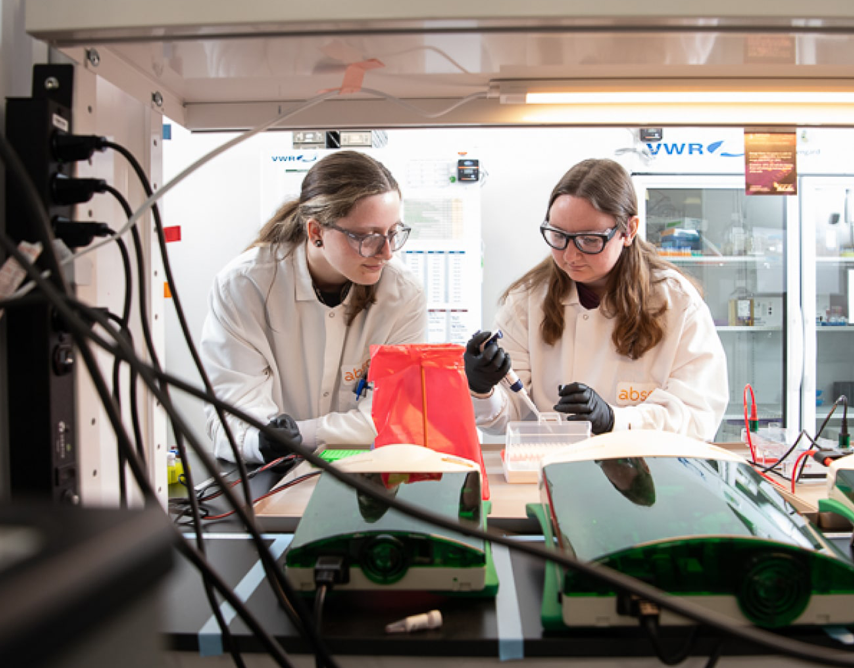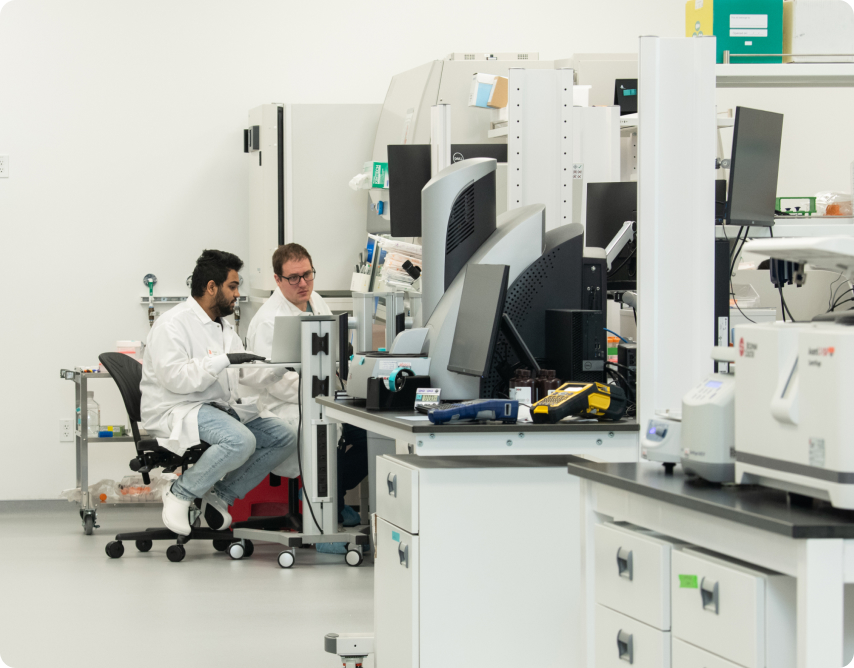The Challenge
Background
Efforts to develop broadly neutralizing antibodies against HIV have long focused on identifying conserved regions of the virus—epitopes that remain stable across its many rapidly evolving strains.
Among the most challenging of these targets lies within the gp120 envelope protein, a structurally complex and heavily glycosylated surface protein essential for viral entry.
One such region, which we refer to as the Caldera region, is particularly intriguing: it is highly conserved across HIV clades, yet structurally concealed and only transiently accessible. If an antibody could lock onto this region, it might provide a universal key—one capable of neutralizing the virus regardless of its genetic variations.

But there’s a problem. The Caldera region is almost impossible to reach. HIV has evolved an elaborate defense: a dense glycan shield, a network of sugar molecules that hides vulnerable sites from the immune system’s antibodies. The few moments when the Caldera region does become accessible are fleeting, appearing only briefly as gp120 shifts between different conformations. By the time an antibody might recognize the target, the virus has already moved on, closing the window of opportunity.
This explains why traditional antibody discovery methods have repeatedly failed. Immunization campaigns, which rely on training the immune system to recognize viral epitopes, have been useless here, because the immune system rarely, if ever, “sees” this part of gp120.
Phage display and synthetic screening methods have also come up empty-handed, because they depend on existing antibodies or fragments with some level of natural binding activity, something that simply doesn’t exist for this target. The few antibodies that come close lack the necessary structural flexibility to actually slip past the glycan barrier and bind the Caldera region.
Our Approach
Reprogramming Antibody Discovery
Our antibody design pipeline is built on two complementary components:
De Novo Antibody Design
This component can create entirely new antibodies without relying on any existing binders, leveraging generative AI and structural modeling.
It combines Absci Gen, a generative engine that uses diffusion-based structure prediction and inverse folding algorithms to design antibodies specific to a given epitope, with Absci Bind, a suite of scoring models that evaluate binding potential, stability, and developability. These tools allow us to prioritize only the most promising candidates for synthesis and high-throughput experimental validation.

AI Lead Optimization
Once a viable lead is identified, our AI lead optimization platform refines the antibody sequence to enhance critical properties such as affinity, stability, manufacturability, and pharmacological behavior.
Using protein language models, we can search vast sequence spaces, orders of magnitude beyond traditional screening methods, and optimize across multiple design objectives simultaneously, all while preserving the core binding function of the antibody. This enables rapid generation of optimized therapeutic candidates with minimized risk of downstream liabilities.

For HIV, de novo design was essential. Since no known antibody had ever bound the Caldera region, there was nothing to optimize—AI had to invent a completely new structure.
The process started with the crystal structure of HIV gp120, providing the AI with a detailed structural framework to generate tailored antibody designs. The Caldera region’s small, glycan-shielded structure required an antibody with a highly specific geometry—one that didn’t yet exist in nature.
Our generative AI engine tackled this challenge in three key steps:
Designing the Binding Interface
AI modeled over 10,000 unique antibody structures, optimizing their CDR loops, particularly the heavy-chain CDR3 regions exceeding 20 amino acids, to reach past the glycan barrier and access the conserved Caldera epitope. Additional modifications were made to heavy-chain CDR2 and light-chain CDR3 to stabilize the antibody’s interaction with the gp120 surface.
Structural Validation
Using diffusion models to generate antibody–antigen complex structures and inverse folding algorithms to recover valid amino acid sequences, the AI ensured that these designs were not just theoretical but structurally sound and synthesizable, conforming to realistic biophysical constraints.
Ranking and Refinement
The Absci Bind scoring model evaluated candidates based on predicted binding energy, interface complementarity, structural integrity, and developability metrics such as aggregation propensity and manufacturability. This multi-parametric filtering process enabled the selection of a small set of four structurally diverse lead candidates for downstream experimental validation.
This wasn’t just an accelerated version of traditional discovery, it was a different approach. Instead of randomly screening for something that might work, our platform precisely engineered an antibody to match the Caldera region’s constraints.
Results
Closing the Loop Between Digital and Physical Experimentation
At Absci, every digital prediction must survive real-world experimental validation. This is the foundation of our lab-in-the-loop system, where AI and physical testing continuously refine each other.

For the HIV program, the process unfolded in a systematic progression from AI-driven design to laboratory validation.
- We synthesized the AI-designed antibodies, translating their sequences from digital models into biological reality.
- Next, we expressed them in yeast surface display assays, screening millions of variants in a single experiment to identify candidates with high potential for gp120 binding.
- From this pool, we selected the most promising variants and subjected them to biophysical validation using Surface Plasmon Resonance (SPR), which confirmed their binding affinity and specificity to gp120.
Each experimental result provides critical validation of the AI-generated designs and will guide future refinements in AI-driven antibody discovery.
The results confirmed that the AI-designed antibodies functioned as intended. They recognized HIV across Clades A, B, and C, indicating that the AI had successfully targeted a conserved epitope rather than a strain-specific feature. Additionally, they showed selectivity for the open conformation of gp120, avoiding the closed state. This confirmed that the antibodies were binding at the intended site—the Caldera region—rather than non-specifically attaching elsewhere on the protein.

Millions of AI-generated antibody variants were screened in a single week, an experimental throughput that significantly accelerated the discovery process.
Yeast surface display assays were used to measure binding efficiency, allowing for rapid filtering of designs. Surface Plasmon Resonance (SPR) testing then provided further confirmation, measuring how tightly these antibodies bound to gp120 and verifying their interaction strength.
With binding confirmed, the next phase of development will focus on further optimization and functional validation. The most promising antibodies will undergo affinity maturation using the AI Lead Optimization platform to improve binding strength while maintaining specificity.
Structural validation studies are also planned—solving the crystal structure of the antibody-gp120 complex to confirm whether the AI-predicted binding mode matches the actual molecular interaction. Finally, the antibodies will be tested in neutralization assays to determine whether they can effectively block HIV infection in biological systems.
Summary
What Makes This Approach Unique?
In summary, what we have is not just an antibody, but a practical demonstration of what is now possible when biologic design is approached as an engineering problem rather than a ‘search by analogy’ problem.
Targeting the Caldera region of HIV gp120 required a different approach. This epitope is structurally concealed, glycan-shielded, and only briefly accessible. We overcame these challenges using our de novo antibody design platform, generating binders that could precisely engage the exposed conformation while maintaining high specificity.
Unlike conventional methods that rely on immune selection or random screening, our approach directly engineered an optimized binding interface. AI-generated antibodies were designed with extended heavy-chain CDR3 loops, allowing penetration through the glycan shield. Molecular dynamics simulations ensured these structures remained stable, while inverse folding models confirmed they were viable, manufacturable sequences.

Experimental validation confirmed both selectivity and broad epitope conservation, demonstrating binding across multiple HIV clades. Screening millions of variants in a single week allowed us to iterate rapidly, refining lead candidates without the need for slow, trial-and-error discovery. By integrating AI-driven rational design with high-throughput experimental validation, we have expanded the scope of biologics development, enabling the precise engineering of antibodies against previously inaccessible targets.
We believe the success of this project came not just from innovative generative AI models, but from a robust well-orchestrated end-to-end process, involving different technologies, models, and experimental steps.
Learn more

Learn more about our work on HIV presented at Absci R&D Day 2024


